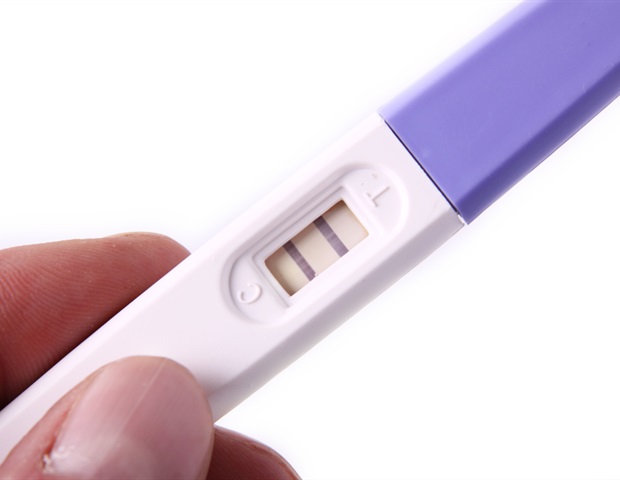
[ad_1]

In relation to the structure of the human genome, it is solely a matter of time earlier than dangerous genes -; genes that might compromise future generations -; come up in a inhabitants. These mutations accumulate within the gene pool, primarily affected by a inhabitants’s dimension and practices like marrying inside a small group, in line with researchers.
However a lot of the details about the consequences of a inhabitants’s mutation load is predicated on genetic idea, with restricted direct proof regarding the results on evolutionary health, or fertility.
New analysis from College of California, Davis, supplies uncommon direct proof displaying that elevated homozygosity -; which means two an identical alleles in a genome -; results in damaging results on fertility in a human inhabitants. The paper was printed Oct. 17 within the Proceedings of the Nationwide Academy of Sciences journal.
Folks have recognized since Darwin that if you happen to take people who find themselves first cousins they usually have kids collectively, the youngsters usually tend to develop sure illnesses or be much less wholesome.”
Brenna Henn, affiliate professor of anthropology within the School of Letters and Science at UC Davis
The analysis assesses the implications of homozygosity amongst Namibia’s Himba group, an remoted, agro-pastoralist inhabitants through which marriage between folks with the identical ancestor happens. The analysis was led by Natalie Swinford, who obtained her doctoral diploma in 2022 in evolutionary anthropology and human inhabitants genetics, and Henn.
“They’re what we name an ‘endogamous inhabitants,’ which means persons are assembly their companions simply from inside that Himba group,” mentioned Henn. “In addition they have a singular system of marriage and copy, the place women and men can have a number of boyfriends or girlfriends throughout their marriage. Which means there are loads of half-siblings within the inhabitants. That is a singular function and it signifies that we are able to leverage that social construction to have a look at totally different genetic results.”
Echoes within the genome
Within the examine, the crew gathered genetic knowledge from 681 people from the Himba inhabitants. Genetic analyses revealed that the Himba have genetic markers that present larger ranges of inbreeding.
Referred to as runs of homozygosity, or ROH, these markers are a number of and notably lengthy within the genomes of the analyzed Himba, which signifies that their mother and father had a excessive probability of sharing an ancestor.
Whereas the Himba inhabitants has traditionally exhibited a choice for consanguinity, Henn and Swinford have been stunned to search out that not one of the people of their pattern inhabitants had mother and father who have been truly first cousins. The lengths of the ROH within the genomes indicated in any other case.
The researchers discovered that these genetic results can pool and accumulate over time. So, bottleneck occasions, like a lower in inhabitants that results in inbreeding, can have genetic echoes that do not manifest till generations later. The researchers concluded that such occasions occurred throughout the previous 12 to 18 generations of the Himba inhabitants.
“Folks might not be full first-cousins,” Henn mentioned. “However they could be half-cousins as soon as eliminated after which their grandparents might need been half-cousins. Anytime one thing like that occurs, it should contribute to there being an identical DNA within the offspring.”
A damaging impact on fertility
The Himba are a pronatalist group, which means they encourage their members to have many kids. Sometimes, there are brief intervals between births, roughly between one and three years, researchers mentioned.
To gauge the consequences of lengthy ROH on fertility, the researchers measured the reproductive success of post-reproductive ladies of their pattern inhabitants. The researchers outlined reproductive success because the variety of kids who survived to at the least 5.
The analysis crew used statistical fashions to investigate the connection between the quantity of ROH within the genome and the variety of kids a girl had. They discovered that the higher the proportion of the genome that was in ROH, the extra seemingly a girl was to have fewer kids than a girl who had much less ROH.
“Because of this a girl who has mother and father who’re extra associated is extra more likely to have fewer kids all through her lifetime than a girl who has mother and father who’re much less associated,” mentioned Swinford.
Contributing authors on the paper embody S.P. Prall, College of Missouri; S. Gopalan, Duke College; C.M. Williams, Brown College; J. Sheehama, College of Namibia; and B.A. Scelza, College of California, Los Angeles.
Supply:
Journal reference:
Swinford, N., et al. (2023). Elevated homozygosity resulting from endogamy leads to health penalties in a human inhabitants. Proceedings of the Nationwide Academy of Sciences. doi.org/10.1073/pnas.2309552120.
[ad_2]